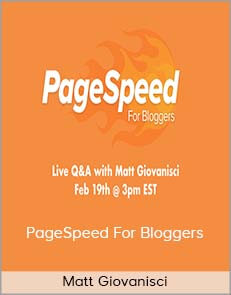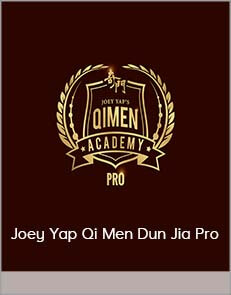Wayne Elise – Charisma Arts Bootcamp
$25.00
There are two internal responses a person has here: the first is desire. Everyone wants to be understood. But the second is fear. People are afraid of being judged and of not being articulate. That’s normal.
Wayne Elise – Charisma Arts Bootcamp
Check it out: Wayne Elise – Charisma Arts Bootcamp
Big open-ended questions are usually best with strangers but sometimes they’re unanswerable. “So what’s your story?”
Uh… I don’t know. What do you mean?”
There are two internal responses a person has here: the first is desire. Everyone wants to be understood. But the second is fear. People are afraid of being judged and of not being articulate. That’s normal.
Our goal is not necessarily to get information but to in-agragate keep the desire while minimizing the fear. We do that by taking away the question and changing up into another direction.
“I’m just interested in you. You seem interesting. But yeah, that’s a bit of an unanswerable question. I like your shoes by the way. I think they’re fun and they look fast. I’m guessing you got an impressive 5K time.”
”Ha. No. These are just for walking around.”
”Oh. Yeah. I gotcha. Walking is the new black I hear. I don’t know how you feel about it but my favorite thing to do is walk around this area with my coffee in the morning.”
”Yeah. That’s not bad. is it?”
”Nope.”
Pause…
”So what are you doing, the rest of the day, if you don’t mind me asking?”
This is a nosey question so we offset it with the modifier. We show we are self-aware enough to know we are being nosey. Again, it’s not that important that the other person answers the question as it is that we build desire to be understood while minimizing the fear that is naturally present.
“I’m just going to a job interview in an hour.”
”Oh wow. That’s great. I’m thinking you’re going to get it.”
”Why’s that?”
”You’re good-looking. It’s been shown by professional studies, the best looking person almost always gets hired. Not saying you’re not qualified as well. I’m sure you are. Maybe I should leave you alone so you can focus.”
”It’s okay. I think I’m as prepared as I can be.”
”Well in that case mind if I join you and you can give me all the interesting bits about yourself?”
Coming back to a form of the original question.
”Sure.”
There’s a few conversational techniques layered in that example. But the over-riding idea here is people want to be understood. That is a form of desire. And our job is to build desire while minimizing fear. Often when I begin working with a client the first discussion we have is about how every move we make with people generates both desire and fear. Being successful conversationally is not about never creating fear. If we take that attitude we will never do anything. Instead it is about understanding the fear we create and using further techniques to reduce it while keeping the desire.
If you’d like to know more consider signing up for phone coaching, attending one of my events or just read more here.
All the best,
Wayne
Simple Story Structure
Wayne Elise
I was chatting with a client today who’s doing well. He’s in a relationship with a great girl who’s ‘out of his league’.
I asked him where he’s taking his conversational skills next and he says he’s been focusing on groups. Indeed, he’s become a leader.
That’s good. But he said he struggles when it comes to storytelling. He feels lost and not sure where to go with this stories.
This is a very common problem. The biggest reason for feeling this way is just a lack of familiarity with conversational story structures. I gave him some pointers and thought it might be worth re-posting those here.
80% of conversational stories are Before and After stories. It’s probably the easiest structure to understand and in my opinion, the most fun to use.
There are three parts:
- Initial feeling
- Action or dialogue
- Changed feeling
That’s it.
Since he worked in a mental health facility I gave him this theoretical story as an example of something he could relate:
- “I was walking into work today feeling down. Lately I’ve been wondering if my life was going anywhere. If it had any meaning.”
- But then this guy, a patient waves me over and gives me a flower he’d stolen from the doctors’ garden and he says, ‘Hope this isn’t weird but I just wanted to say it’s been real helpful talking to you. This is all I got to say thanks. But hopefully it’s enough.’”
- “I was stunned. I never expected this. I gave him my patented 12 Finger Handshake ™ It was just like the perfect timing. I smiled the whole day and felt like I was buzzing.”
The end.
Often the feeling at the end is the exact opposite of the initial feeling.
Like a coin being turned over.
The point of course is not to make up stories that didn’t happen. This is just a theoretical story. But it is to understand the structure and begin to think about the things that happen to us in terms of, ‘How would I tell thing that happened to me as a story?’
The Before and After story structure is perfect for short conversational stories.
Further tip: Pay attention to your feelings towards the things that happen to you every day. It’s those feelings that the main character which is you, and how those feelings changed over time, that creates the basis for empathy and rapport from your audience, and makes your story interesting.
All the best,
Wayne
Enjoy!
9 Comments
conversation
Cubes
Wayne Elise
Last week’s Conversation Camp in London took a fun twist. A client and I met some people and ended up spending much of the day together. The artist invited us to the private club Shoreditch House which was near where we run the Conversation Camp there in London at the Ace hotel. Shoreditch house was great fun and there’s no place like a private club for meeting cool and attractive people.
Before that though, we were goofing around and filmed some video or myself and the artist, Tamer Nakisci juggling his art. I just bought a new iPhone and was keen to try out the slow-motion video feature so I ended up editing it all up to music when I got home.
In any case, conversation skills are great at getting things you want, like dates with attractive people and success in sales and business. But they’re also great for random, fun adventures with strangers.
Here’s the story I wrote with the video at the end. Enjoy!
– Wayne
Cubes
This is the true story of four strangers meeting in a cafe.
The storyteller sits at the next table to the artist. They are strangers.
The artist pulls out a bright object and says, “I have these cubes. They’re the basic building block of our lives.”
“Interesting,” says the storyteller. “Why not a ball?”
“Balls are wonderful but they’re literally, worlds to their own. You can’t stack a ball or build structures with them like you can the cube.”
The storyteller rubbed his chin. “I never thought about it that way.”
The artist made a show of offering the cube. “Will you accept this gift?
“Yes. I’ll set it right here next to my tea and later try to give it a good home.” And so he took the cube, not knowing that would change the course of the day.
“What’s that?” said the technologist when he showed up.
“A building block of creativity,” said the storyteller. “The cube is like any of the elements of a story. Think of it like a character, or an action shot or a reaction shot.”
“I see,” said the technologist. “I want to learn more about stories. The three sat together appreciating the cube.
“Its color is striking,” said the technologist.
“Yes,” said the artist. “I worked hard to get that just right. “It’s not quite orange which would make you think of fruit. And it’s not quite red which would make you think of fire engines and street lights. The color lies somewhere in between – not familiar, but not strange either.”
The technologist and the storyteller nodded their heads as if the artist had discovered something profound.
Just then a Marathon Runner showed up. She wore fast shoes and smiled easily.
“Is this table taken,” she said.
“Please,” said the artist, gesturing grandly for her to sit at the next table to the group.
“What is that?” she asked.
“Our technology is made up of discreet units,” said the technologist. “Your phone for instance, in your pocket is made up of cubes. There are cubes within cubes within cubes. This cubes represents all those cubes.”
“You’re right I’m sure,” she said. “But I don’t know what the cube means to me. Running a marathon is very circular with no sharp corners at all.”
“Ah yes,” said the artist.
“Good point,” said the storyteller.
“Oh well,” said the technologist.
They sat in quiet for a moment, each contemplating the meaning of this conversation.
“But,” said the Marathon Runner. “I like the color.”
Everyone smiled and agreed on that. The conversation ran on to other things and, in a short time, they became friends.
“What shall we do to keep the fun going?” asked the artist.
“Let’s go shoot some video of the cube outside on the street.”
“Yes,” said the artist. “That’s where the cube belongs – with the people.”
The storyteller did not know if the artist was joking. But they all went outside and filmed themselves playing with cubes.




















